Guide to Green ETFs: Investing in Sustainability
Introduction
Investing in sustainability has become an increasingly popular strategy among investors who want to align their financial goals with their values. One way to do this is by investing in Green ETFs, which offer exposure to companies that are committed to sustainable practices and have a positive impact on the environment. In this guide, we will explore what Green ETFs are, their benefits, and how to invest in them effectively.
What Are Green ETFs?
Green ETFs, also known as Sustainable ETFs or ESG ETFs (Environmental, Social, and Governance), are exchange-traded funds that focus on companies with strong environmental, social, and governance practices. These ETFs typically hold a diversified portfolio of stocks that meet certain sustainability criteria.
There are different types of Green ETFs available in the market, each with its own unique investment strategy. Some Green ETFs may focus on specific sectors, such as renewable energy or clean technology, while others may have a broader focus on companies that meet specific sustainability standards.
To help you get started, let's review some popular Green ETFs offered by well-known companies such as Vanguard, BlackRock, and iShares.
- Vanguard ESG U.S. Stock ETF (ESGV) - This ETF seeks to track the performance of the FTSE US All Cap Choice Index, which includes companies with strong ESG practices. It has a low expense ratio and offers exposure to a wide range of U.S. companies.
- BlackRock iShares Global Clean Energy ETF (ICLN) - This ETF focuses on companies involved in the production of renewable energy. It tracks the S&P Global Clean Energy Index and offers investors an opportunity to invest in the clean energy sector globally.
- iShares MSCI ACWI Low Carbon Target ETF (CRBN) - This ETF aims to reduce exposure to carbon emissions by targeting companies with lower carbon footprints. It tracks the MSCI ACWI Low Carbon Target Index and provides broad exposure to companies across developed and emerging markets.
What To Look For in a Green ETF
When considering investing in Green ETFs, there are several factors to consider to ensure you make an informed decision.
- ESG Criteria: Look for ETFs that have clear and transparent ESG criteria. These criteria should align with your values and investment goals. Consider whether the ETF focuses on specific sustainability themes or has a broader ESG approach.
- Costs and Fees: Pay attention to the expense ratio and any additional fees associated with the ETF. Lower costs can have a significant impact on your investment returns over the long term.
- Performance: Evaluate the historical performance of the ETF. Look at its track record and compare it to relevant benchmarks. Keep in mind that past performance is not indicative of future results, but it can provide some insights into the ETF's performance.
Strategies for Investing in Green ETFs
Once you have selected a suitable Green ETF, you can consider different strategies for investing in them.
- Investing in a Single ETF: If you have a specific sustainability theme or sector you want to focus on, investing in a single Green ETF can be a straightforward approach. This strategy allows you to have targeted exposure to companies that align with your values.
- Investing in Multiple ETFs: To diversify your portfolio and spread the risk, you can consider investing in multiple Green ETFs. This strategy allows you to have exposure to a broader range of sustainability themes and sectors. However, it's important to ensure that there is no significant overlap between the holdings of different ETFs.
- Investing in a Diversified Portfolio: Another option is to combine Green ETFs with other asset classes to create a diversified portfolio. This strategy allows you to balance the risk and potential return of your investments. Consider consulting with a financial advisor to determine the optimal asset allocation based on your risk tolerance and investment goals.
Conclusion
Investing in Green ETFs is a powerful way to align your investments with your values and contribute to a more sustainable future. By investing in companies that prioritize environmental, social, and governance practices, you can support positive change while potentially earning attractive returns.
In this guide, we have explored what Green ETFs are, their benefits, and how to invest in them effectively. Remember to consider the ESG criteria, costs and fees, and performance when selecting a Green ETF. Additionally, consider different strategies such as investing in a single ETF, multiple ETFs, or a diversified portfolio.
Investing in Green ETFs requires careful research and due diligence. It's important to stay informed about the latest developments in the sustainability space and regularly review your investment strategy. By doing so, you can make informed investment decisions that align with your financial goals and values.
For further reading and resources on Green ETFs and sustainable investing, consider exploring reputable financial websites, reading books on sustainable investing, and consulting with financial advisors who specialize in ESG investing. Remember, knowledge is power when it comes to investing, and staying informed will help you make informed decisions that align with your sustainability goals.





No comments